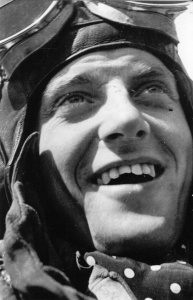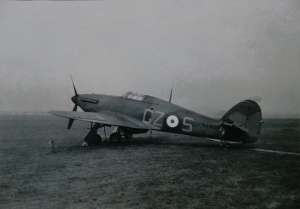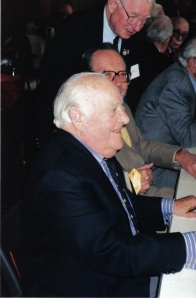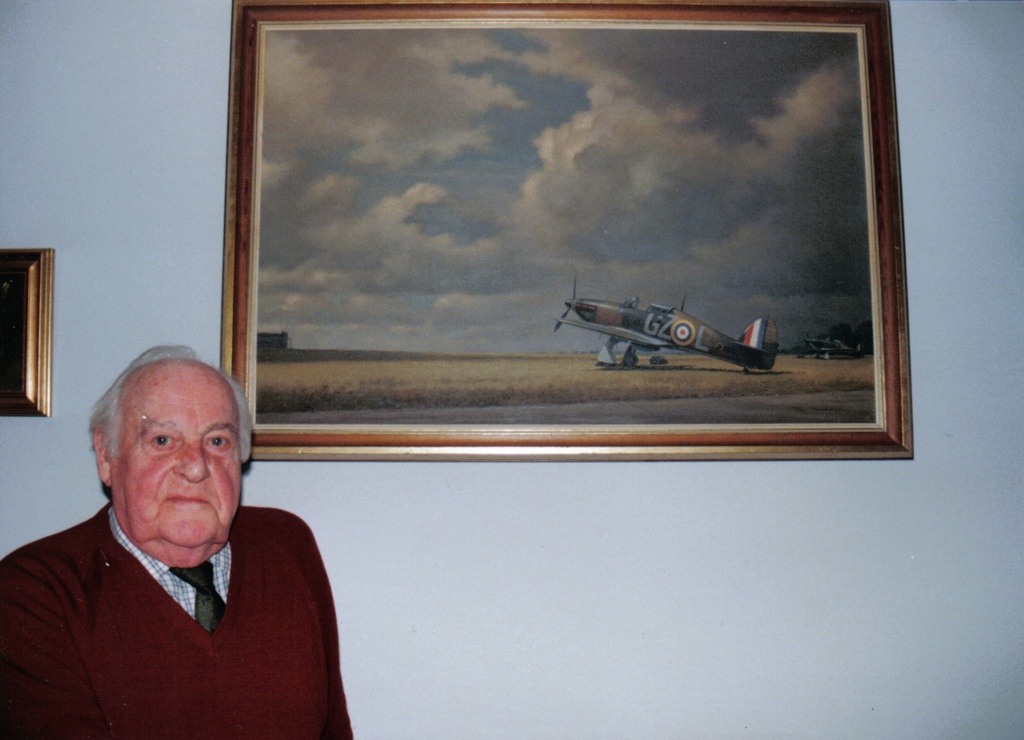
To Battle of Britain enthusiasts, the name of Peter Brothers is synonymous with the critical, sixteen-week long, aerial conflict of summer 1940. Even though Peter was featured in a number of iconic photographs taken during the battle, like most of the Few this remarkable man remains largely unheard of on the wider stage.
Peter Malam Brothers first flew at the tender age of sixteen before learning to fly privately, in advance of achieving a Short Service Commission in the RAF. By October 1936, Pete was flying Gloster Gauntlets with 32 Squadron at Biggin Hill, becoming a flight commander two years later. In October that year, 32 Squadron received the Hawker Hurricane monoplane fighter. By the time war broke out, therefore, Pete was an experienced pilot – opening his account on 18 May 1940 by destroying an Me 109; many more victories followed. By September 1940, Flight Lieutenant Brothers was commanding ‘B’ Flight in Squadron Leader Bob Stanford Tuck’s 257 Squadron at North Weald. There Pete survived a low-level strafing and bombing attack by German fighter-bombers, scored more victories and received a well-earned DFC.

After the Battle of Britain, Pete was rested as an instructor before forming 457 (Australian) Squadron on Spitfires, leading which he destroyed two more enemy fighters. Next stop was commanding 602 Squadron at Redhill, and more combat successes, before achieving every fighter pilots’ dream: appointed Wing Leader at Tangmere in October 1942. After a staff appointment, Pete returned to operations, leading the Exeter and Culmhead Wings, surviving the war with a string of aerial victories and the coveted ‘double’ of the DSO and DFC. Afterwards, he enjoyed a long and successful career in the post-war air force, retiring as an Air Commodore in 1973.

Pete and I first met in 1988, when I was researching the life and times of the Polish Flying Officer Franek Surma, who had also served with 257 Squadron in the Battle of Britain. We enjoyed protracted and historically valuable correspondence for many years, and Pete’s surprise visits to see me at the police station whilst passing through Malvern with his wife and three-legged dog ‘Spindle’ were always memorable occasions – given his great sense of humour! An indelible memory is attending the Battle of Britain Fighter Association’s annual reunion at Bentley Priory in 1997, and standing with Pete and over one hundred of the Few outside on the terrace watching the Spitfire fly past. Incredible!

By then, Pete was Deputy Chairman of the Association, in which capacity he contributed the foreword to my Battle of Britain: The Photographic Kaleidoscope Volume III, which included a number of previously unpublished photographs from his personal album (as did the subsequent Fighter Pilot: The Photographic Kaleidoscopewhich included the wider war). Pete attended the book’s launch at Worcester Guildhall in 2000, together with Association Chairman Air Chief Marshal Sir Christopher Foxley-Norris. When ‘CFN’ passed away in 2003, Pete succeeded him as Chair, in which capacity he served until his own sad passing, aged ninety-one, in 2008.

Pete Brothers was an airman and fighter pilot to the core, passionately committed to ensuring that the memory of fallen comrades should never be forgotten. It was a privilege to call him my friend – another of the Few much-missed.

